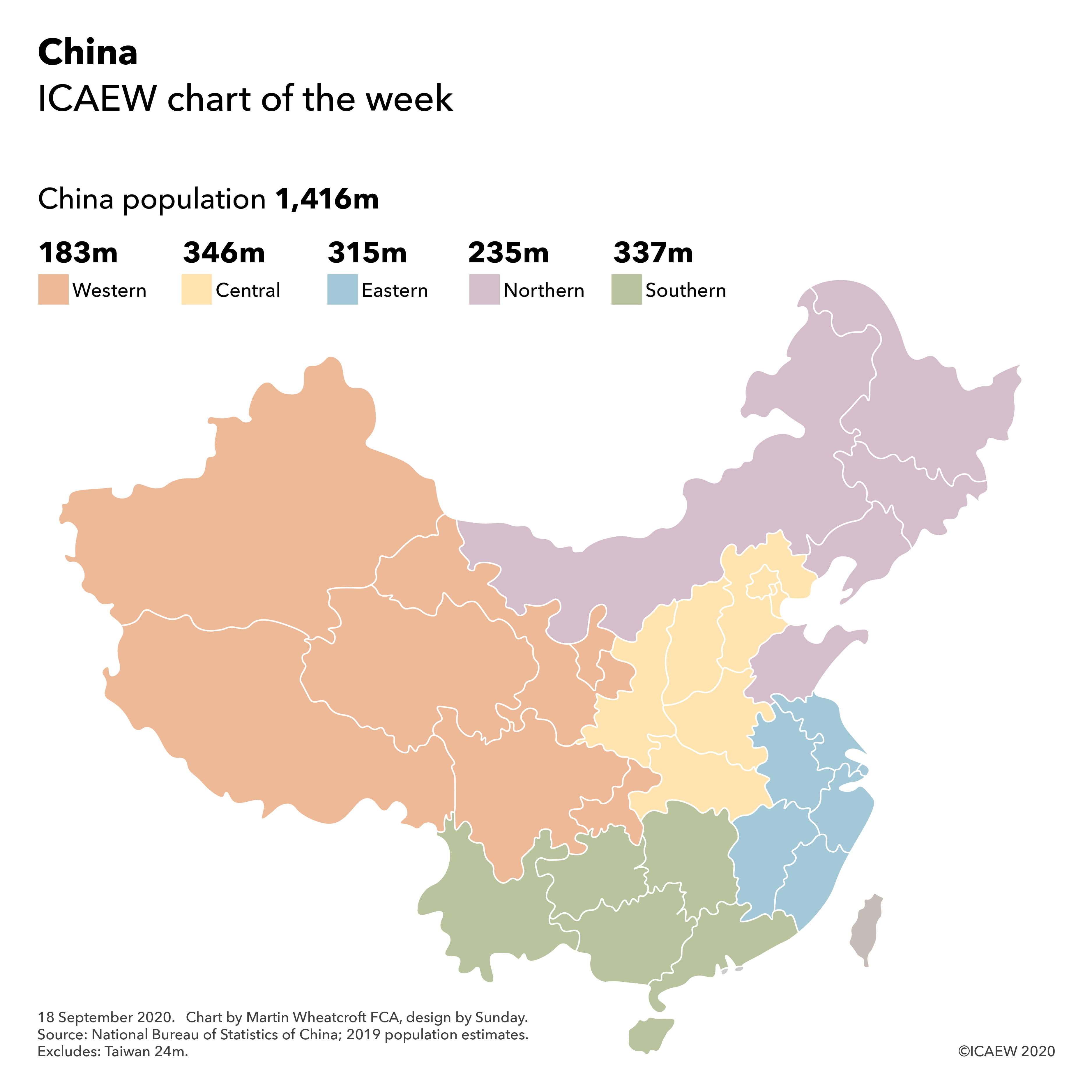
Following up on our chart on the United States of America a couple of weeks ago, this time we are looking at China, which has more than four times as many people as the USA and more than 20 times as many as the UK.
There are a number of different ways of allocating China’s 33 first-level administrative divisions (excluding Taiwan) into wider regions, but for this particular chart we have gone with the five military districts used by the People’s Liberation Army, which divides up the provinces into Western, Southern, Central, Eastern and Northern China.
Three regions are similar in population size to the USA, with the 346m population of Central China and 337m of Southern China exceeding the USA’s 332m, while Eastern China with 315m people is not far behind. Northern China with 235m people has about 70% of the numbers in the USA, while Western China with 183m has just over half as many. They all substantially exceed the UK’s 69m population.
At 9.60m square kilometres China is marginally smaller than the USA’s 9.84m, although if inland waters are excluded this turns around with China’s 9.33m square kilometre land area exceeding the USA’s 9.15m. Hence, there is around four times as much space per person in the USA than in China, which in turn has twice as much space per person as for the UK.
Economically, China was around 30% bigger than the USA on a ‘purchasing power parity’ (PPP) basis in 2019, when US GDP was $21.4tn. However, based on actual exchange rates, China’s economy was around two-thirds of the size. Economic activity per person in China in 2019 was around $20,000 on a PPP basis and $10,000 on an actual exchange rate basis, compared with the $64,000 or so per person that was generated in the USA. This compares with the UK, where economic activity in 2019 was in the order of $45,000 per person using PPP and $41,000 using actual exchange rates.
China is not expected to remain the largest country by population for much longer, with India’s just under 1.4bn people expected to grow at a faster rate to overtake China within the next decade.
| Western | 183m | Southern | 337m | Central | 346m | Eastern | 315m | Northern | 235m |
| Sichuan | 84m | Guangdong | 115m | Henan | 96m | Jiangsu | 81m | Shandong | 101m |
| Chongqing | 31m | Hunan | 69m | Hebei | 76m | Anhui | 64m | Liaoning | 44m |
| Gansu | 26m | Guangxi | 50m | Hubei | 60m | Zhejiang | 59m | Heilongjiang | 38m |
| Xinjiang | 25m | Yunnan | 49m | Shaanxi | 39m | Jiangxi | 47m | Jilin | 27m |
| Ningxia | 7m | Guizhou | 36m | Shanxi | 37m | Fujian | 40m | Inner Mongolia | 25m |
| Qinghai | 6m | Hainan | 9m | Beijing | 22m | Shanghai | 24m | ||
| Tibet | 4m | Hong Kong SAR | 8m | Tianjin | 16m | ||||
| Macau SAR | 1m |
Excludes: Taiwan 24m.